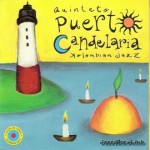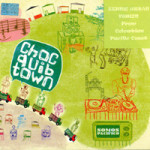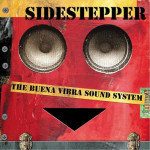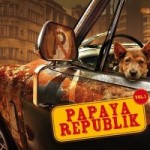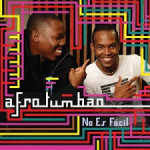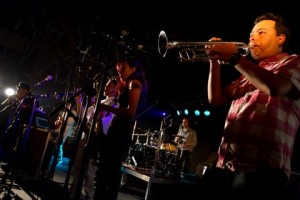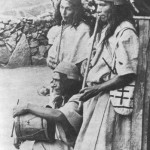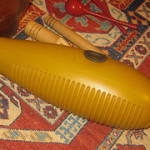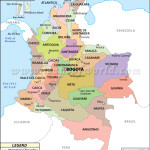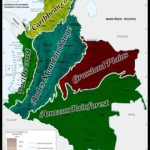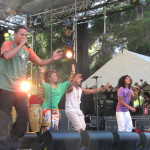Silly misconceived Beaver. How wrong I was.
Since my first trip to Colombia in 2007 I had thought that Colombia has a huge amount of fusion music – loved passionately by a huge number of Colombians. “Why wouldn’t it be?” I thought, “It’s so awesome”. Plus I had found lots of it, well maybe about 10 bands anyway – so I thought that there must be a lot more to be found, and that it must be very popular.
- Systema Solar
- Belembe
- Puerto Candelaria
- ChocQuibTown
- Bomba Estereo – vol. 1
- Sidestepper
- Papaya Republik
- Afrotumbao
Apparently not so, as I have learned the past week in Bogota from speaking with some people in the know.
Talking with a Colombian Ethnomusicologist (Simon Calle) and three members of Colombian fusion music group Papaya Republik, I learned this…
- Yes, there are more and more bands in Colombia creating fusion music.
- Whereas once upon a time fusion bands were mostly found in the capital Bogota, they also exist in other major Colombian cities, more and more so – Medellin, Cali, Barranquilla, and even Pasto.
- No, modern Colombian fusion bands are not really listened to or even well known by the mainstream population of Colombia. It is listened to by a minority of Colombians and is actually the ‘alternative’ music scene here.
- The two biggest forms of popular music in Colombia are Vallenato and Reggeaton. The mainstream radio stations play pretty much only that. I don’t have much to say about Vallenato. There is good and bad Vallenato music, and most of it is not to my taste. I will however criticise the musical plague that is Reggeaton every chance I get.
- The Colombian ‘alternative scene’ that enjoys fusion music bands consists of the “middle and upper classes” (Ethnomusicologist, Simon Calle), or the “Colombian intellectuals” (Batori from Papaya Republik).

Batori – Papaya Republik
Well, surprised I was at this news about the popularity (or lack thereof) of Colombian fusion music.
In hindsight I guess my misconception was based on two things:
1. My own luck and circumstance in finding lots of fusion music on my first time in Colombia. My Colombian friends took me to gigs (they are not in lower socio-economic classes by the way) – and once I found some, I went looking for the rest. I thought what I found must be a small portion of it, but now it seems it was actually a large % of all fusion music that existed.
2. My assumption that because I thought it was unique and awesome, everyone in Colombia must think that too! I forgot that when I look at most mainstream musical tastes everywhere around the world today, they are generally (I think) pretty shite. It’s all subjective I guess.
Disappointed at this news I was too…
*Disappointed for mainstream Colombians missing out on home grown unique and interesting music; and
*Disappointed for Colombian fusion music artists largely unappreciated (and unrewarded financially) in their own country.
I’m happy that Colombian fusion music exists. I´m happy that I know about it. I´m happy that I can share it.
I´ve already posted some, and will post more, rundowns and sample music of some contemporary Colombian fusion bands….Check them out and let me know what you think. Is mainstream Colombia missing out on the good stuff? I think so.


